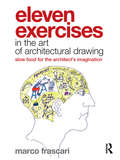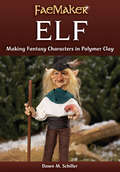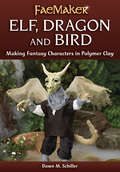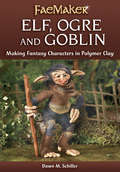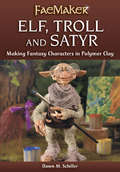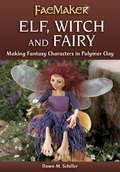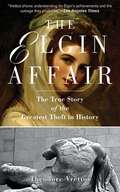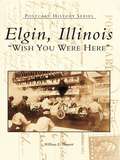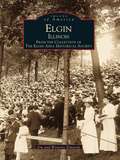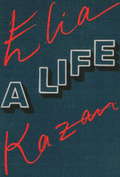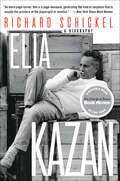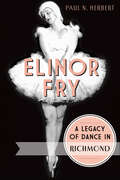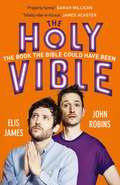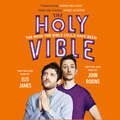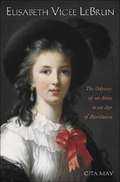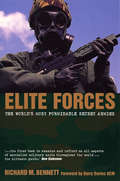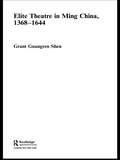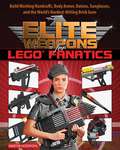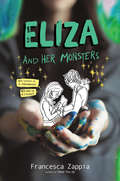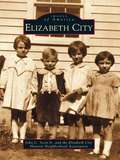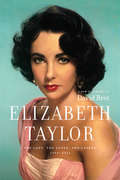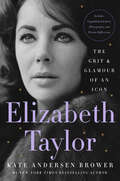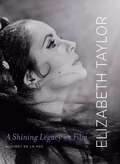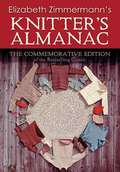- Table View
- List View
Eleven Exercises in the Art of Architectural Drawing: Slow Food for the Architect's Imagination
by Marco FrascariThis book deals with the critical nature and crucial role of architectural drawings. A manual which is essentially not a manual; it is an elucidation of an elegant manner for practising architecture. Organized around eleven exercises, the book does not emphasize speed, nor incorporate many timesaving tricks typical of drawing books, but rather proposes a slow, meditative process for construing drawings and for drawing constructing thoughts. This is an indispensable reference text and an effective textbook for students seeking to advance their appreciation of the nature and exercise of architectural drawings.
Elf: Making Fantasy Characters in Polymer Clay (FaeMaker)
by Dawn M. SchillerThis fun book shows readers how to make standalone fantasy character figures with polymer clay. Readers will learn about materials, special precautions and quick, simple techniques; then they will get 1 step-by-step demonstration. The demonstration shows how to make an accurate Elf figure, from beginning supports to sculpting the head (including eyes, chin, nose, brows, lips, cheeks, mouth, ears, makeup and hair) body, baking and costuming.
Elf, Dragon and Bird: Making Fantasy Characters in Polymer Clay (FaeMaker)
by Dawn M. SchillerThis fun book shows readers how to make standalone fantasy character figures with polymer clay. Readers will learn about materials, special precautions and quick, simple techniques; then they will get 3 step-by-step demonstrations including an Elf, Dragon and Bird. Each demonstration shows how to make accurate figures, from beginning supports to sculpting the head (including eyes, chins, noses, brows, lips, cheeks, mouths, ears, makeup and hair) bodies, baking and costuming.
Elf, Ogre and Goblin: Making Fantasy Characters in Polymer Clay (FaeMaker)
by Dawn M. SchillerThis fun book shows readers how to make standalone fantasy character figures with polymer clay. Readers will learn about materials, special precautions and quick, simple techniques; then they will get 3 step-by-step demonstrations including an Elf, Ogre and Goblin. Each demonstration shows how to make accurate figures, from beginning supports to sculpting the head (including eyes, chins, noses, brows, lips, cheeks, mouths, ears, makeup and hair) bodies, baking and costuming.
Elf, Troll and Satyr: Making Fantasy Characters in Polymer Clay (FaeMaker)
by Dawn M. SchillerThis fun book shows readers how to make standalone fantasy character figures with polymer clay. Readers will learn about materials, special precautions and quick, simple techniques; then they will get 3 step-by-step demonstrations including an Elf, Troll and Satyr. Each demonstration shows how to make accurate figures, from beginning supports to sculpting the head (including eyes, chins, noses, brows, lips, cheeks, mouths, ears, makeup and hair) bodies, baking and costuming.
Elf, Witch and Fairy: Making Fantasy Characters in Polymer Clay (FaeMaker)
by Dawn M. SchillerThis fun book shows readers how to make standalone fantasy character figures with polymer clay. Readers will learn about materials, special precautions and quick, simple techniques; then they will get 3 step-by-step demonstrations including an Elf, Witch and Fairy. Each demonstration shows how to make accurate figures, from beginning supports to sculpting the head (including eyes, chins, noses, brows, lips, cheeks, mouths, ears, makeup and hair) bodies, baking and costuming.
The Elgin Affair: The True Story of the Greatest Theft in History
by Theodore VrettosAlmost two hundred years after they were "purchased" from Greece, the finest and most famous marbles of antiquity still remain a burning issue. This compelling, controversial story of the Elgin marbles re-creates in full and colorful detail "the greatest art theft in history," a steamy tale of obsession, intrigue, adultery, and ruin. As the British ambassador to the Sublime Porte in Constantinople, Lord Elgin encountered in his endeavors some of the most famous names of nineteenth-century history: Napoleon, Sultan Selim III, Lord Nelson, Lord Byron, and Keats. Drawing on original source material-letters, diaries, official government reports, and memoranda, Vrettos brilliantly brings to life these fascinating stories.
Elgin, Illinois: Wish You Were Here
by William E. BennettElgin, Illinois, was founded in 1835. However, the community truly came into its own at the end of the Civil War, when the Elgin National Watch Company moved there and took the city name as its own. The name Elgin became synonymous with quality for over 100 years. Elgin, Illinois: "Wish You Were Here" tells the story of the town of Elgin during the 20th century, featuring vintage postcards of that period.Special events of historic interest include the tornado of 1920, and the Elgin Road Races, which gained national fame for a brief time around the World War I era. More than 200 pictures, culled from the collection of the Elgin Area Historical Society, and colorful narratives tell of the accomplishments by those first few generations who lived and died in the community.
Elgin, Illinois: From the Collection of the Elgin Area Historical Society
by Wynette Edwards Jim EdwardsElgin was named by a city founder, James T. Gifford, after his favorite hymn. The city shares its name with 20 cities in 15 states and 8 countries. Elgin is situated on the banks of the Fox River, 35 milesnorthwest of Chicago, the city with which Elgin had thriving business exchanges in agricultural and industrial goods. The city's world-wide fame, for the most part, has come from its watch factory and Mr. Gail Borden's milk company. Pianos, shoes, books, and even chewing gum were also manufactured in Elgin and sold internationally. This exciting new study of a major Midwestern city is chock-full of images, many of which have never before been published. Featured in Elgin, Illinois is information about the Elgin National Watch Company, early circus and carnival attractions, as well as rip-roaring national road races. Highlighted in one chapter is Elgin's part in helping to win World War Iat home, complete with original photographs from the front in Europe. This lively and historical look at Elgin from the 1800s to the 1930s is interwoven with national and international trends and events.
Elia Kazan: A Life
by Elia Kazan"This is the best autobiography I've read by a prominent American in I don't know how many years. It is endlessly absorbing and I believe this is because it concerns a man who is looking to find a coherent philosophy that will be tough enough to contain all that is ugly in his person and his experience, yet shall prove sufficiently compassionate to give honest judgment on himself and others. Somehow, the author brings this off. Elia Kazan: A Life has that candor of confession which is possible only when the deepest wounds have healed and honesty can achieve what honesty so rarely arrives at--a rich and hearty flavor. By such means, a famous director has written a book that offers the kind of human wealth we find in a major novel." --Norman Mailer. In this amazing autobiography, Kazan at seventy-eight brings to the undiluted telling of his story--and revelation of himself--all the passion, vitality, and truth, the almost outrageous honesty, that have made him so formidable a stage director (A Streetcar Named Desire, Death of a Salesman, All My Sons, Cat on a Hot Tin Roof, Tea and Sympathy), film director (On the Waterfront, East of Eden, Gentleman's Agreement, Splendor in the Grass, Baby Doll, The Last Tycoon, A Face in the Crowd), and novelist (the number-one best-seller The Arrangement.) Kazan gives us his sense of himself as an outsider (a Greek rug merchant's son born in Turkey, an immigrant's son raised in New York and educated at Williams College). He takes us into the almost accidental sojourn at the Yale Drama School that triggered his commitment to theatre, and his edgy, exciting apprenticeship with the new and astonishing Group Theatre, as stagehand and stage manager--and as actor (Waiting for Lefty, Golden Boy) ... his first nervous and then successful attempts at directing for theatre and movies (The Skin of Our Teeth, A Tree Grows in Brooklyn) ... his return to New York to co-found the Actors Studio (and his long and ambivalent relationship with Lee Strasberg) ... his emergence as premier director on both coasts. With his director's eye for the telling scene, Kazan shares the joys and complications of production, his unique insights on acting, directing, and producing. He makes us feel the close presence of the actors, producers, and writers he's worked with--James Dean, Marlon Brando, Tennessee Williams, Vivien Leigh, Tallulah Bankhead, Sam Spiegel, Darryl Zanuck, Harold Clurman, Arthur Miller, Budd Schulberg, James Baldwin, Clifford Odets, and John Steinbeck among them. He gives us a frank and affectionate portrait of Marilyn Monroe. He talks with startling candor about himself as husband and--in the years where he obsessively sought adventure outside marriage--as lover. For the first time, he discusses his Communist Party years and his wrenching decision in 1952 to be a cooperative witness before HUAC. He writes about his birth as a writer. The pace and organic drama of his narrative, his grasp of the life and politics of Broadway and Hollywood, the keenness with which he observes the men and women and worlds around him, and, above all, the honest with which he pursues and captures his own essence, make this one of the most fascinating autobiographies of our time.
Elia Kazan: A Biography
by Richard Schickel“No mere page-turner, this is a page-devourer, generating the kind of suspense that is usually the province of the playwright or novelist.” —The New York Times Book ReviewFew figures in film and theater history tower like Elia Kazan. Born in 1909 to Greek parents in Istanbul, Turkey, he arrived in America with incomparable vision and drive, and by the 1950s he was the most important and influential director in the nation, simultaneously dominating both theater and film. His productions of A Streetcar Named Desire and Death of a Salesman reshaped the values of the stage. His films—most notably On the Waterfront—brought a new realism and a new intensity of performance to the movies. Kazan’s career spanned times of enormous change in his adopted country, and his work affiliated him with many of America’s great artistic moments and figures, from New York City’s Group Theatre of the 1930s to the rebellious forefront of 1950s Hollywood; from Katharine Hepburn and Spencer Tracy to Marlon Brando and James Dean.Ebullient and secretive, bold and self-doubting, beloved yet reviled for “naming names” before the House Un-American Activities Committee, Kazan was an individual as complex and fascinating as any he directed. Noted film historian and critic Richard Schickel illuminates much more than a single astonishing life and life’s work: He pays discerning tribute to the power of theater and film, and casts a new light on six crucial decades of American history.Includes photographsA New York Times Notable Book“Magnificent.” —The Washington Post“Unsparingly thorough.” —Publishers Weekly“Remarkably insightful.” —Martin Scorsese“Vividly conveys the director’s potent personality: his exuberance, relentless work ethic, and frank assessments of the fleeting nature of fame.” —Booklist (starred review)
Elinor Fry: A Legacy of Dance in Richmond
by Paul N. HerbertIn Richmond, no other name is more synonymous with dance than Elinor Fry. Helen Keller, Bill "Bojangles" Robinson and author Tom Wolfe were just some of the people with whom Fry connected in five decades of dance. From 1920 to 1970, Fry was involved, often accompanied by her beloved students, in nearly every major public event in the River City. Performing in an array of venues and photographed twice by "National Geographic," Fry was a blend of creativity and business savvy and a wonderful role model for thousands of children who learned dance in her studio. Join author and historian Paul Herbert as he celebrates Elinor Fry's spirit and exceptional achievements in the world of dance in Richmond.
Elis and John Present the Holy Vible: The Book The Bible Could Have Been
by Elis James John RobinsThe Elis James and John Robins' Show has become cult listening, and that cult has registered for charitable status, published quarterly accounts and been given a full blessing by the Archbishop of Broadcasting. It's official: Elis and John are a religion, and this book is their Holy Vible.Have you ever failed to Keep It Session? Is your new flatmate a complete coin? Have you ever eaten Space Raiders on the toilet and written 'Grief Is Living' in your journal? Then this book is for you. If not, don't worry, it won't be long before you're making up games, looking at Freddie, or facing your own personal farthing-gate.Our obsessions make us what we are, and though you may never have addressed a will to Brian May or cried watching Ronnie O' Sullivan make a 147, you'll have done something similar, and Elis and John are here to tell you that you're not weird, so come on in, and taste the vibe! Or should I say, READ the vibe!
Elis and John Present the Holy Vible: The Book The Bible Could Have Been
by Elis James John Robins'Elis and John are my go-to place when I need a bloody good laugh. Properly funny!' Sarah MillicanComedians Elis James and John Robins have captured the hearts and minds of a generation, and it's time those hearts and minds had a book.Elis and John met in 2005 performing stand-up comedy in a pub called The Yellow Kangaroo in Cardiff. They eyed each other suspiciously before Robins offered the limpest handshake in the history of the world.'It was a power play,' says Robins. 'I may even have raised it for him to kiss.' James expands: 'It was one of the weirdest things I'd ever experienced, but having known John now for over a decade, it was the tip of the iceberg. I can honestly say he's the oddest man I've ever met.'Little did they know that ten years later they would be presenting a radio show together that would make them comedy royalty...Ok, radio comedy royalty...Ok, commercial digital indie radio royalty...But with a podcast! Now, The Elis James and John Robins' Show has become cult listening, and that cult has registered for charitable status, published quarterly accounts and been given a full blessing by the Archbishop of Broadcasting. It's official: Elis and John are a religion, and this book is their Holy Vible.Have you ever failed to Keep It Session? Is your new flatmate a complete coin? Have you ever eaten Space Raiders on the toilet and written 'Grief Is Living' in your journal? Then this book is for you. If not, don't worry, it won't be long before you're making up games, looking at Freddie, or facing your own personal farthing-gate.Our obsessions make us what we are, and though you may never have addressed a will to Brian May or cried watching Ronnie O' Sullivan make a 147, you'll have done something similar, and Elis and John are here to tell you that you're not weird, so come on in, and taste the vibe! Or should I say, READ the vibe!
Elis and John Present the Holy Vible: The Book The Bible Could Have Been
by Elis James John Robins'Elis and John are my go-to place when I need a bloody good laugh. Properly funny!' Sarah MillicanComedians Elis James and John Robins have captured the hearts and minds of a generation, and it's time those hearts and minds had a book. Or an audiobook, that not only features extra nuggets and riffs that are too hot for the printed page, but also serves as an excellent showreel should you wish to book Elis or John for lucrative voice over work.Elis and John met in 2005 performing stand-up comedy in a pub called The Yellow Kangaroo in Cardiff. They eyed each other suspiciously before Robins offered the limpest handshake in the history of the world.'It was a power play,' says Robins. 'I may even have raised it for him to kiss.'James expands: 'It was one of the weirdest things I'd ever experienced, but having known John now for over a decade, it was the tip of the iceberg. I can honestly say he's the oddest man I've ever met.'Little did they know that ten years later they would be presenting a radio show together that would make them comedy royalty...Ok, radio comedy royalty...Ok, commercial digital indie radio royalty...But with a podcast! Now, The Elis James and John Robins' Show has become cult listening, and that cult has registered for charitable status, published quarterly accounts and been given a full blessing by the Archbishop of Broadcasting. It's official: Elis and John are a religion, and this book is their Holy Vible.Have you ever failed to Keep It Session? Is your new flatmate a complete coin? Have you ever eaten Space Raiders on the toilet and written 'Grief Is Living' in your journal? Then this book is for you. If not, don't worry, it won't be long before you're making up games, looking at Freddie, or facing your own personal farthing-gate.Our obsessions make us what we are, and though you may never have addressed a will to Brian May or cried watching Ronnie O' Sullivan make a 147, you'll have done something similar, and Elis and John are here to tell you that you're not weird, so come on in, and taste the vibe! Or should I say, READ the vibe!Read by Elis and John, and featuring bonus material and an exclusive introduction. (p) Orion Publishing Group 2018
Elisabeth Vigée Le Brun: The Odyssey of an Artist in an Age of Revolution
by Gita MayThe foremost woman artist of her age, Elisabeth Vigée Le Brun (1755-1842) exerted her considerable charm to become the friend, and then official portraitist, of Marie Antoinette. Though profitable, this role made Vigée Le Brun a public and controversial figure, and in 1789 it precipitated her exile. In a Europe torn by strife and revolution, she nevertheless managed to thrive as an independent, self-supporting artist, doggedly setting up studios in Rome, Naples, Venice, Milan, Vienna, St. Petersburg, and London. Long overlooked or dismissed, Vigée Le Brun's portraits now hang in the Louvre, in a room of their own, as well as in all leading art museums of the world. This gripping biography tells the story of a singularly gifted and high-spirited woman during the revolutionary era and explores the development and significance of her art. The book also recounts the public and private lives of Elisabeth Vigée Le Brun, connecting her with such personalities of her age as Catherine the Great, Napoleon, and Benjamin Franklin, and setting her experiences in the context of contemporary European politics and culture. A generous selection of illustrations, including sixteen of Vigée Le Brun's portraits presented in full color, completes this exceptional volume.
Elite Forces
by R M BennettThe invincible reputation of specialist military units such as the USA's Delta Force, Israel's IDP, and of course, Britian's SAS has grown steadily in recent years. Thanks to a number of successful campaigns and anti-terror operations, from London's Iranian Embassy siege in 1980 to the second Gulf War, in which they played a crucial role, it's now assumed that special forces are ideal for our world of small, localised conflicts - and especially George W Bush's war on terror.Elite Forces: The World's Most Formidable Secret Armies:- Contains over 500 compelling entries that cut through myth and secrecy.- Details the history, selection and training procedures and orders of battle of every major elite fighting force in the world today.- Is packed with hair-raising examples of individual heroism, endurance and courage in adversity.- Is fully up to date and includes recent coalition operations in Afghanistan and Iraq.- Takes an objective look at what happens when things go wrong, as they did most famously during the Gulf War of 1991 and in America's intervention in Somalia in 1993.- Explores the hidden links between elite forces and governments, intelligence organisations and business, and their controversial lack of accountability.- Examines how new technologies have come to the aid of the elite soldier.This is the first book of its kind to examine all aspects of the overlap between elite forces and the hidden worlds of intelligence and counter-terrorism, and takes an objective look at the secret, controversial role of special forces and 'Freelancers' in covert, deadly operations around the world. Elite Forces is a compelling, revealing - and occasionally shocking - read, and an authoritive and easy-to-use reference resource.
Elite Theatre in Ming China, 1368-1644 (Routledge Studies in the Early History of Asia)
by Grant Guangren ShenTheatre occupied a particularly important place in the life of the elite, for whom owning a theatre troupe was highly fashionable and for whom theatre performances were an integral part of formal gatherings, various rituals and ceremonies. Based on an exploration of original historical records, including comparisons with other forms of ancient theatre, Shen provides an overview of elite theatre in Ming China and examines the details of theatrical performance.
Elite Weapons for LEGO Fanatics: Build Working Handcuffs, Body Armor, Batons, Sunglasses, and the World's Hardest Hitting Brick Guns
by Martin HudepohlThe last LEGO brick weapon construction book and design guide you’ll ever need, Elite Weapons for LEGO Fanatics features building instructions for thirteen fully functional LEGO masterpieces, including the monstrous, 27-inch-long Dinosaur Superior, a fully automatic combat rifle that can puncture aluminum cans, and a highly detailed HK G3 brick replica. Also featuring a helmet, a baton, handcuffs, sunglasses, and a grappling hook gun, which allows you to retrieve distant objects without ever leaving your seat, Elite Weapons for LEGO Fanatics includes a chapter on how to find the LEGO pieces you need and a comic book story featuring a hero using the weapons in action.
Eliza and Her Monsters
by Francesca Zappia<P>Eighteen-year-old Eliza Mirk is the anonymous creator of Monstrous Sea, a wildly popular webcomic, but when a new boy at school tempts her to live a life offline, everything she’s worked for begins to crumble. <P>In the real world, Eliza Mirk is shy, weird, smart, and friendless. Online, Eliza is LadyConstellation, the anonymous creator of a popular webcomic called Monstrous Sea. With millions of followers and fans throughout the world, Eliza’s persona is popular. Eliza can’t imagine enjoying the real world as much as she loves her digital community. <P>Then Wallace Warland transfers to her school, and Eliza begins to wonder if a life offline might be worthwhile. But when Eliza’s secret is accidentally shared with the world, everything she’s built—her story, her relationship with Wallace, and even her sanity—begins to fall apart. <P>With pages from Eliza’s webcomic, as well as screenshots from Eliza’s online forums, this uniquely formatted book will appeal to fans of Noelle Stevenson’s Nimona and Rainbow Rowell’s Fangirl. <P>Scott Westerfeld’s <i>Afterworlds</i> meets <i>Nimona</i> in this novel about art, fandom, and finding the courage to be yourself.
Elizabeth City
by Elizabeth City Historic Neighborhood Association John C. Scott Jr.Located in Eastern North Carolina, Elizabeth City exists today as a favorite stop among boaters and travelers, while remaining a beloved community for its residents. The city possesses a distinct character, flavored by warm weather, friendly residents, a revitalized waterfront, and historic architecture. With the many waterways that surround the area, such as the Pasquotank River, the Albemarle Sound, and various other creeks and streams, it is not surprising that the city's history has been greatly shaped by such canals. With the completion of the Dismal Swamp Canal in 1805, which connected these waterways with Norfolk's port, Elizabeth City residents were able to offer their agricultural and lumber goods to the world.Elizabeth City is a volume that shares with readers keepsakes from the town's defining years. Vintage photographs, many taken by well-known Elizabeth City photographer William Henry Zoeller, come alive through descriptive text. Spotlighted are the many residents who contributed to the city's heritage, whether publicly or in a smaller, more personal fashion, including Dr. A.L. Pendleton and his family in the city's first automobile and the Wright Brothers who stayed in the city for a while before making their way to Kitty Hawk. Other images offer glimpses of the ever-changing streets and waterfront, as well as the various forms of architecture that have lined both over the years.
Elizabeth Taylor
by David BretFrom her fairytale childhood to her impressive array of movies and marriages, Elizabeth Taylor's life, both on and off the screen, has enchanted, saddened, appalled, and entertained us for the past seven decades.Elizabeth Taylor: The Lady, The Lover, The Legend -- the first new biography to be published following her death -- strips away the Hollywood veneer to reveal the woman as she really was. Through his incredible depth of knowledge, biographer David Bret sheds new light on the Elizabeth Taylor we thought we knew: her feud with Louis B. Mayer, her friendship with Montgomery Clift, the abuse she suffered at the hands of Nicky Hilton, the real story behind the Taylor-Fisher-Reynolds love triangle -- and, of course, her epic relationship with Richard Burton, just as stormy in real life as it was on film. With compassion and admiration, Bret describes Taylor's later years, including her fight for AIDS awareness and support for gay rights, her strange friendship with Michael Jackson, and her deteriorating health leading up to her untimely death on March 23, 2011.Elizabeth Taylor: The Lady, The Lover, The Legend is a shockingly honest, richly detailed book about one of the greatest Hollywood superstars of all time.
Elizabeth Taylor: The Grit & Glamour of an Icon
by Kate Andersen BrowerFrom the #1 New York Times bestselling author of The Residence and First Women, the first ever authorized biography of the most famous movie star of the twentieth century, Elizabeth Taylor.No celebrity rivals Elizabeth Taylor’s glamour and guts or her level of fame. She was the last major star to come out of the old Hollywood studio system and she is a legend known for her beauty and her magnetic screen presence in a career that spanned most of the twentieth century and nearly sixty films. But her private life was even more compelling than her Oscar-winning on-screen performances. During her seventy-nine years of rapid-fire love and loss she was married eight times to seven different men. Above all, she was a survivor—by the time she was twenty-six she was twice divorced and once widowed. Her life was a soap opera that ended in a deeply meaningful way when she became the first major celebrity activist to lead the fight against HIV/AIDS. A co-founder of amfAR, she raised more than $100 million for research and patient care. She was also a shrewd businesswoman who made a fortune as the first celebrity perfumer who always demanded to be paid what she was worth.In the first ever authorized biography of the Hollywood icon, Kate Andersen Brower reveals the world through Elizabeth’s eyes. Brower uses Elizabeth’s unpublished letters, diary entries, and off-the-record interview transcripts as well as interviews with 250 of her closest friends and family to tell the full, unvarnished story of her remarkable career and her explosive private life that made headlines worldwide. Elizabeth Taylor captures this intelligent, empathetic, tenacious, volatile, and complex woman as never before, from her rise to massive fame at age twelve in National Velvet to becoming the first to negotiate a million-dollar salary for a film, from her eight marriages and enduring love affair with Richard Burton to her lifelong battle with addiction and her courageous efforts as an AIDS activist. Here is a fascinating and complete portrait worthy of the legendary star and her legacy.Elizabeth Taylor features a photo insert.
Elizabeth Taylor: A Shining Legacy on Film
by Cindy De La HozA film retrospective that spans Taylor's 70-year career featuring ?behind-the-scenesOCO stories and rare photos. "
Elizabeth Zimmermann's Knitter's Almanac: The Commemorative Edition (Dover Knitting, Crochet, Tatting, Lace)
by Elizabeth ZimmermannOne of America's most ingenious and creative knitters presents 23 patterns in this beloved classic of knitting lore. Elizabeth Zimmermann's bestselling guide includes Aran sweaters, mittens, socks, and patterns for other items that can be followed by intermediate to advanced knitters or adapted into original works.This commemorative hardcover edition celebrates the centenary of Elizabeth Zimmermann's birth and the 50th anniversary of the founding of her company. Its new features include color photos of the finished patterns, many of them reknit using contemporary yarns, as well as a frontispiece by Andrew Wyeth, a preface by the author's daughter, an introduction by Stephanie Pearl-McPhee, instructions for the February Lady Sweater, and other bonus items.
